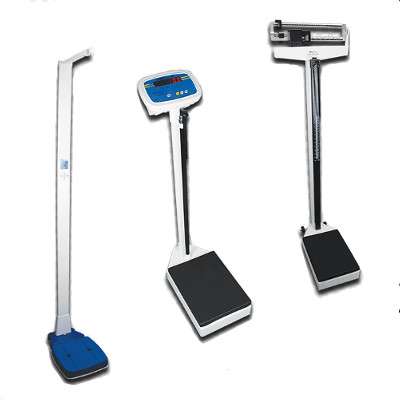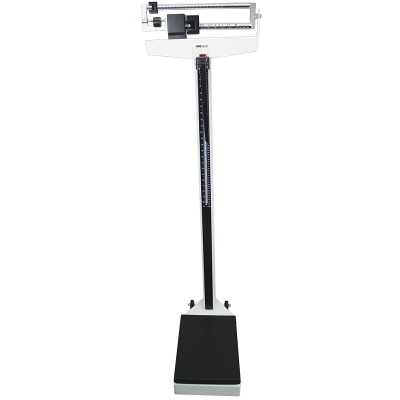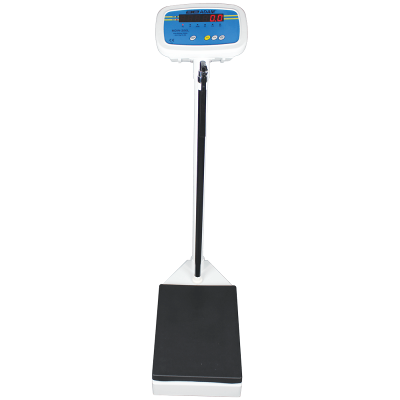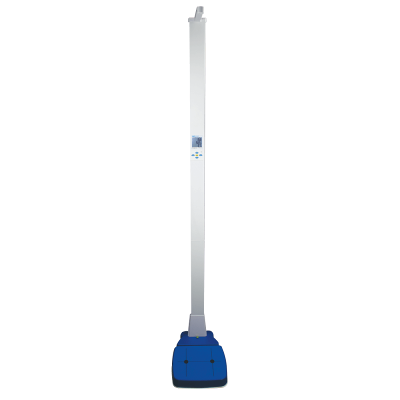
There are different types of healthcare scales (these may also be called medical scales, or health and fitness scales), and it’s not always easy for beginners to know how to use them, or read the results. This post will cover some basic practices when measuring the height, weight and BMI of people, and some useful tips on reading results and basic operation of physician scales
Useful tips to using a weighing scale to monitor health
- Make sure the scale is calibrated before starting the weighing process.
- The person being weighed should remain motionless until the weight and height are recorded.
- The person being weighed should not be wearing shoes or heavy clothing.
- When measuring height, make sure the person being measured is standing straight, with their feet stable on the scale.
- Make sure the scale is set at zero before weighing.
- Record all relevant results.

Types of weighing scales used in healthcare
There are a wide range of weighing scales and devices used in healthcare, and the scale or balance used will depend largely on the application. For example, when using a scale for personal health monitoring, it is likely that a bathroom scale or gym scale with BMI calculation will be used for weight checking, while portioning scales will be used for diet control. In contrast, hospitals may use Class approved chair scales to monitor the health of patients with limited mobility, while class approved analytical balances may be used to measure prescriptions and produce pharmaceuticals for consumers. Every scale and balance can be categorised as a mechanical or digital scale, therefore we have provided a brief introduction to both types below:
Mechanical scales: Guide to using the MDW mechanical physician scales
Mechanical scales don’t have displays like many other scales do, so it may seem a bit tricky at first to read the results. However, we can assure you that the process is very straightforward once you know how!
Measuring Height with the MDW
- Before the person steps onto the scale platform, the measuring arm should be lifted to the horizontal position, and raised well above the person’s apparent height.
- The person may now step onto the scale’s platform.
- The measuring arm should be held horizontally above the person’s head, and should not be released.
- Carefully lower the measuring arm while keeping it horizontal until it rests gently upon the top of the person’s head. (If the person is shorter than 101.5 cm, push the latch to the right, while pushing the measuring arm down until it rests horizontally upon the top of the person’s head).
- The height is read on the bar at the top of the support, in centimeters or inches.

Measuring Weight with the MDW
- At the top of the scale there are notched horizontal beams with numbers and balancing masses of various sizes. A person’s weight is determined by moving the balancing masses until the beam is level.
- Start by roughly estimating the person’s weight. For example, an adult of average size will most likely weigh about 60 kg.
- Move the large balancing mass to 60 kg, or whatever number is closest to the estimated weight. The reading at this marking will indicate the weight of the person using the larger balancing mass; it will not show the full weight, but you can go from there. For example, if the person weighs 62.5 kg, the large balancing mass will show that the person weighs at least 60kg, but less than 70kg.
- You can then move the smaller masses for finer adjustments until the weight is found.
- When the lever returns to its original horizontal position, you can record the reading.
- To make sure the correct weight is found, make sure the balancing masses sit in the notches.
- The total reading of the two balancing masses will give the final weight of the person on the platform.
For example: Lower mass 60 kg + Upper mass 2.5 kg = Total weight of the person is 62.5 kg.
Digital Scales: Guide to using the MUW & MDW digital physician scales
Weight is simply determined by having the person stand motionless on the scale; the reading will appear on the indicator display after a few seconds.

Calculating BMI (body mass index) with a digital weighing scale
Body mass index, or BMI for short, is a way to determine if your weight is healthy for your height. A BMI from 18.5 to 24.9 is considered normal while a BMI of more than 25 is considered overweight. A person is considered obese if the BMI is above 30, and severely obese if the BMI is above 40.
BMI isn’t perfect, and some factors such as muscle mass need to be taken into account. People with high muscle mass, such as athletes, generally have a higher BMI that could paint them as obese despite their excellent physical condition. Pregnant women should also not use BMI to determine if their weight is healthy. BMI is easy to get and it’s a quick way to figure out if a person is prone to developing certain medical conditions such as diabetes, high blood pressure and artery diseases. So while it’s an important tool for medical practitioners, it’s also one that should be used in conjunction with observational skills and critical thinking.
BMI is calculated by dividing a person's weight (in kilograms) by the height in meters (squared), or by multiplying the weight in pounds by 703, then dividing by the height in inches (squared). Some digital scales allow you to put the height in through the keypad and calculate it for you.
Measuring height with ultrasonic scales: Adam Equipment's MUW
Height is measured with the ultrasonic sensor, which will detect that a person is on the platform and start determining the height. This is signified by the symbol in the upper right part of the display. When a stable reading of weight is obtained, the readings will be displayed along with the calculated BMI. They will remain on the display until cleared.

Adam Equipment carries a wide variety of health and fitness scales. Browse our website to take a look at our selection of health scales, watch videos showing how to operate them, or read the manuals.

